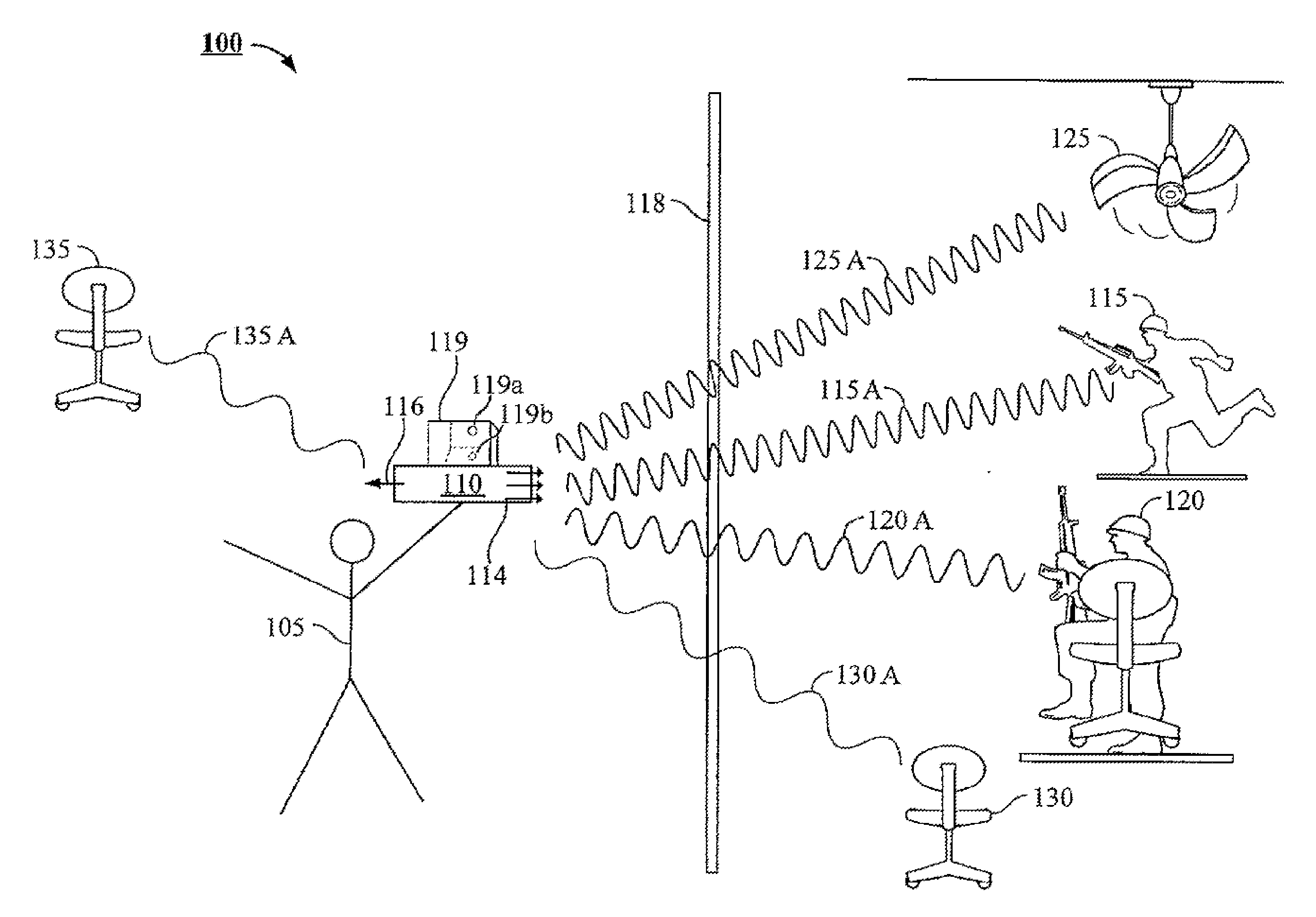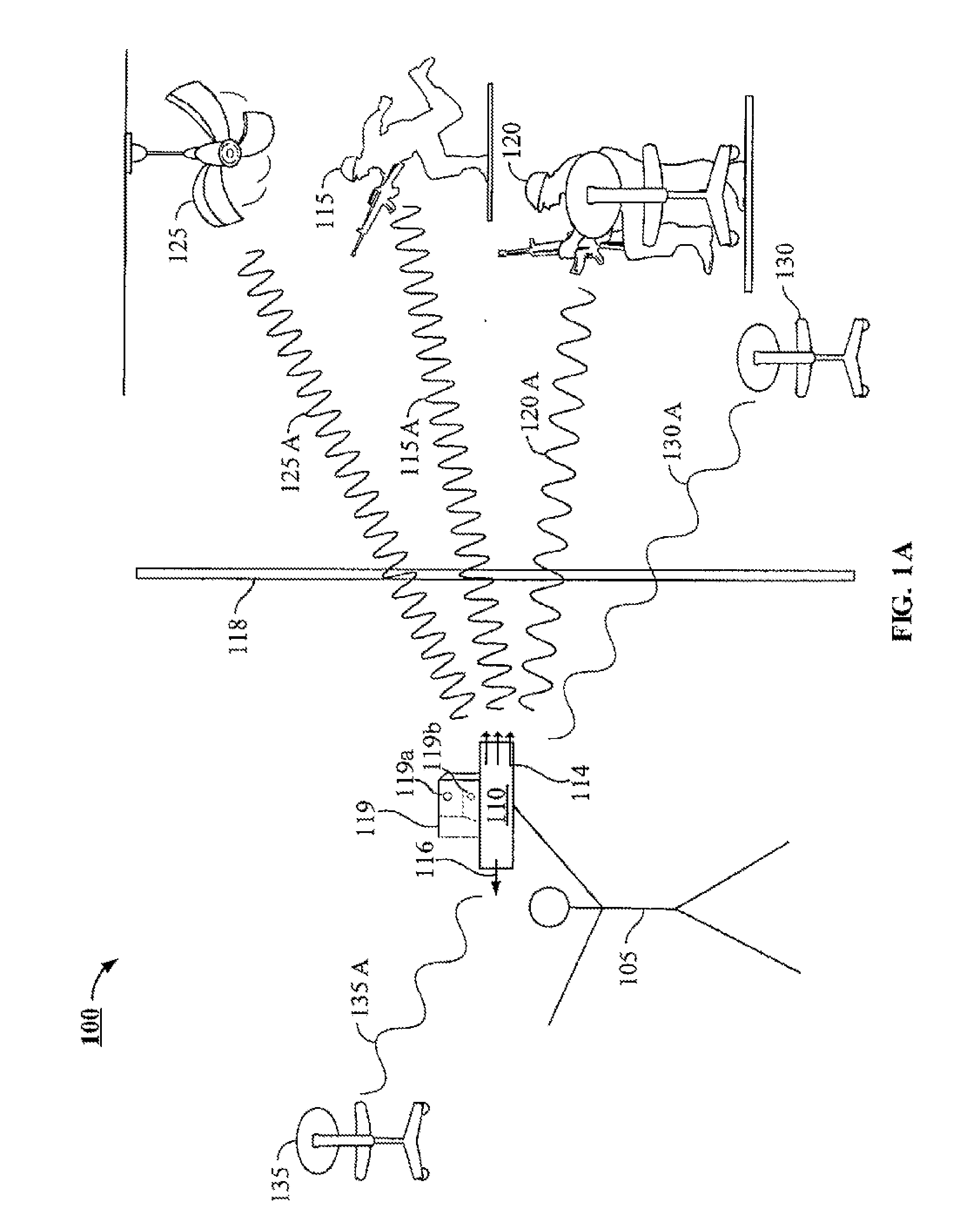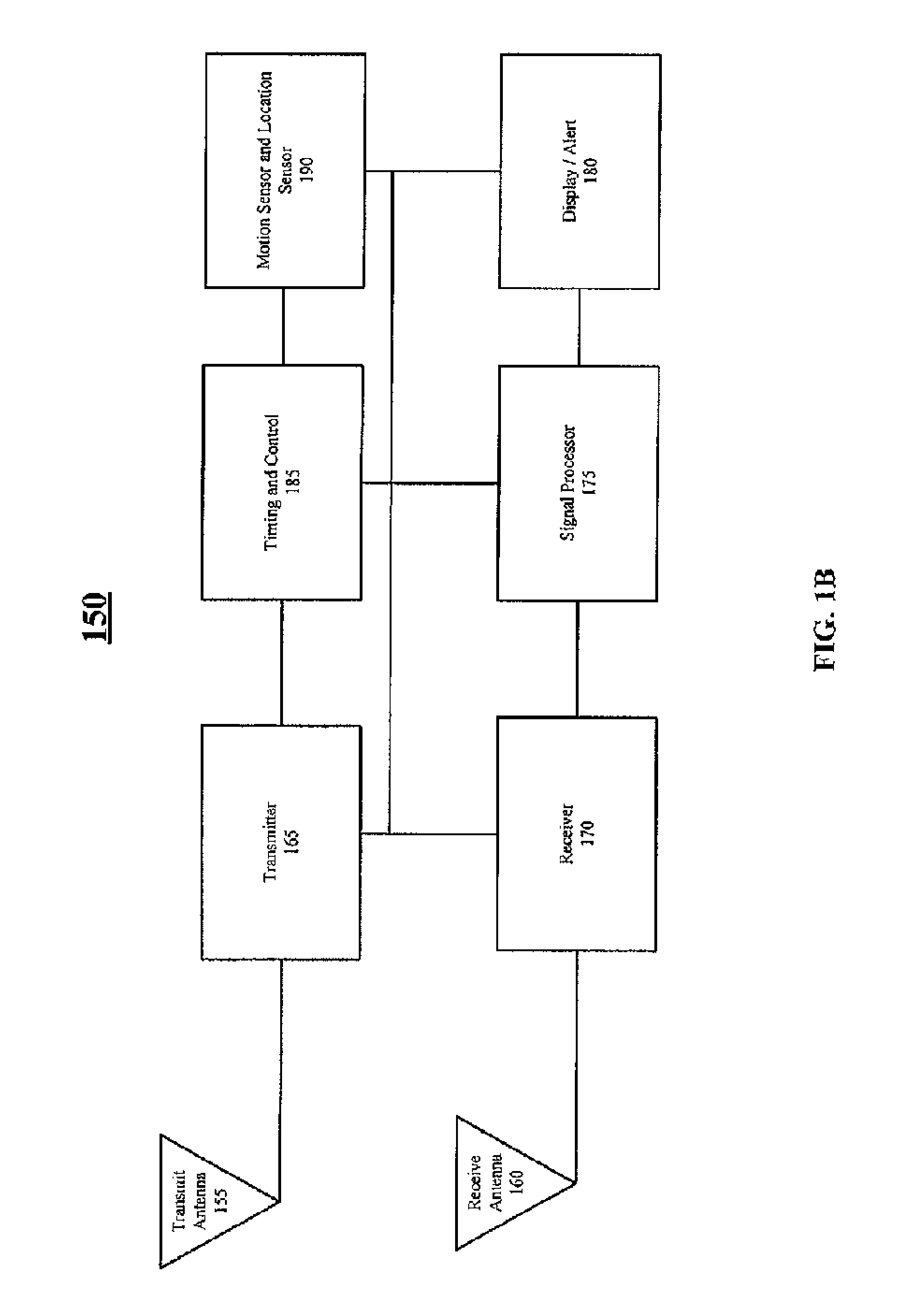Patient monitoring and surveillance system, methods, and devices
- Summary
- Abstract
- Description
- Claims
- Application Information
AI Technical Summary
Benefits of technology
Problems solved by technology
Method used
Image
Examples
example 1
[0208]FIG. 4A shows a signal processing unit 2 in close proximity of a transmitter device 6 along with a separate receiver 12. A single antenna 8 is attached to the transmitter device and is depicted for simplicity, although multiple antennas may be used in the transmitter. An omni-directional signal 10 is transmitted and partially reflected by a patient 18 that is wearing a circular identification tag 20. The partially reflected signal 16 is received by receiving antenna 14. The signal processing unit 2 is configured to receive the frequency and phase information from both the transmitter and receiver device and is able to process the data to provide the vital signs, location, position and movement of patient 18 based on frequency and phase shifts between the transmitted signal and reflections of the transmitted signal. The circular identification tag 130 further provides the identity of patient 18 when receiving the transmitted signal and reflecting an identification signal. Here,...
example 2
[0209]FIG. 4B depicts a two patient room monitoring set up with two patient rooms 26 and 32 with adjoined bathrooms 28 and 34 respectively. In the middle of both patient rooms, is transmitter radar device 22 which transmits an omni-directional signal 24 into both patient rooms. In the patient rooms, patient 30 is lying on the ground of bathroom 28 while patient 36 is slightly on the bed in an abnormal position. Both patients are wearing circular patient information tags.
example 3
[0210]FIG. 10 is a display of two exemplary portable monitoring devices, 38 and 42. The portable monitoring device is configured to have a visual display 40 and 44. Display 40 and 44 displays information in four graphical panels that includes heart rate (HR), breathing rate (RR), position, and location of the two patients 30 and 36 of FIG. 4B as well as their identities, ‘A’ and ‘B’. In display 40, Patient A's heart rate, breathing rate, position and location are all outside of normal predetermined ranges which triggers an alarm on all four panels. In display 44, Patient B has a heart rate, breathing rate and location within normal predetermined ranges, however has an abnormal position of 45 degrees that is at risk of falling from the bed which triggers an alarm.
PUM
 Login to View More
Login to View More Abstract
Description
Claims
Application Information
 Login to View More
Login to View More - R&D
- Intellectual Property
- Life Sciences
- Materials
- Tech Scout
- Unparalleled Data Quality
- Higher Quality Content
- 60% Fewer Hallucinations
Browse by: Latest US Patents, China's latest patents, Technical Efficacy Thesaurus, Application Domain, Technology Topic, Popular Technical Reports.
© 2025 PatSnap. All rights reserved.Legal|Privacy policy|Modern Slavery Act Transparency Statement|Sitemap|About US| Contact US: help@patsnap.com



